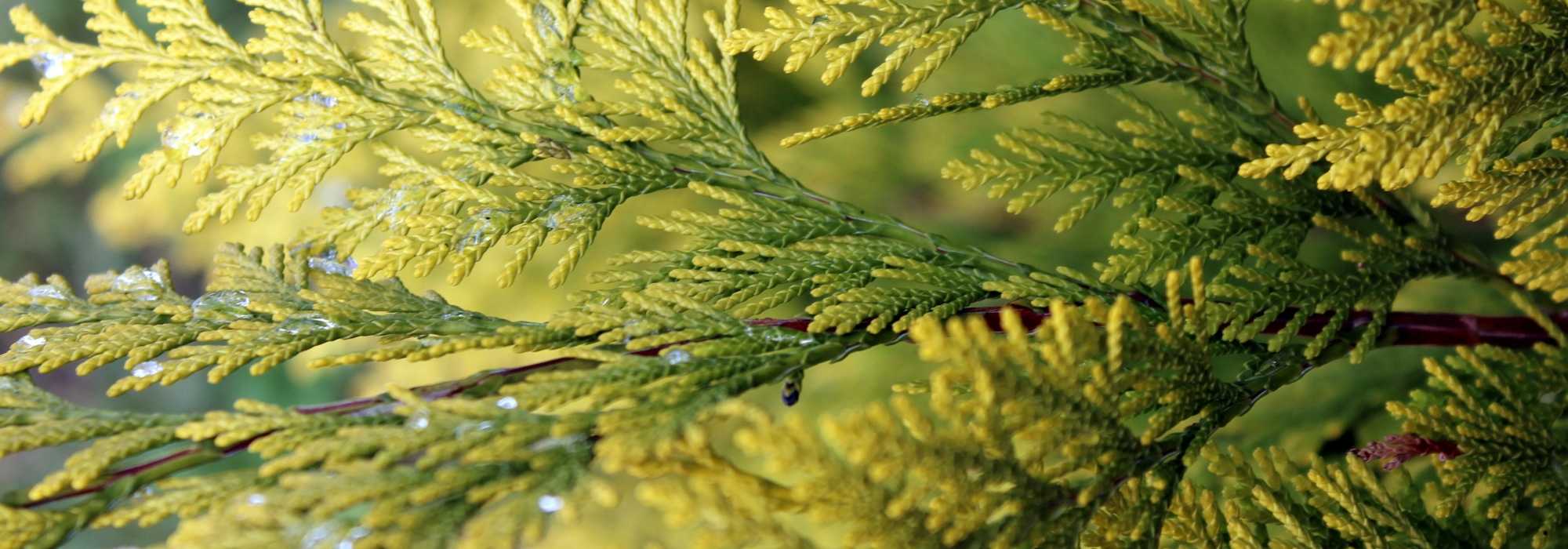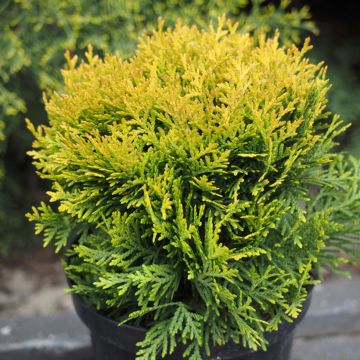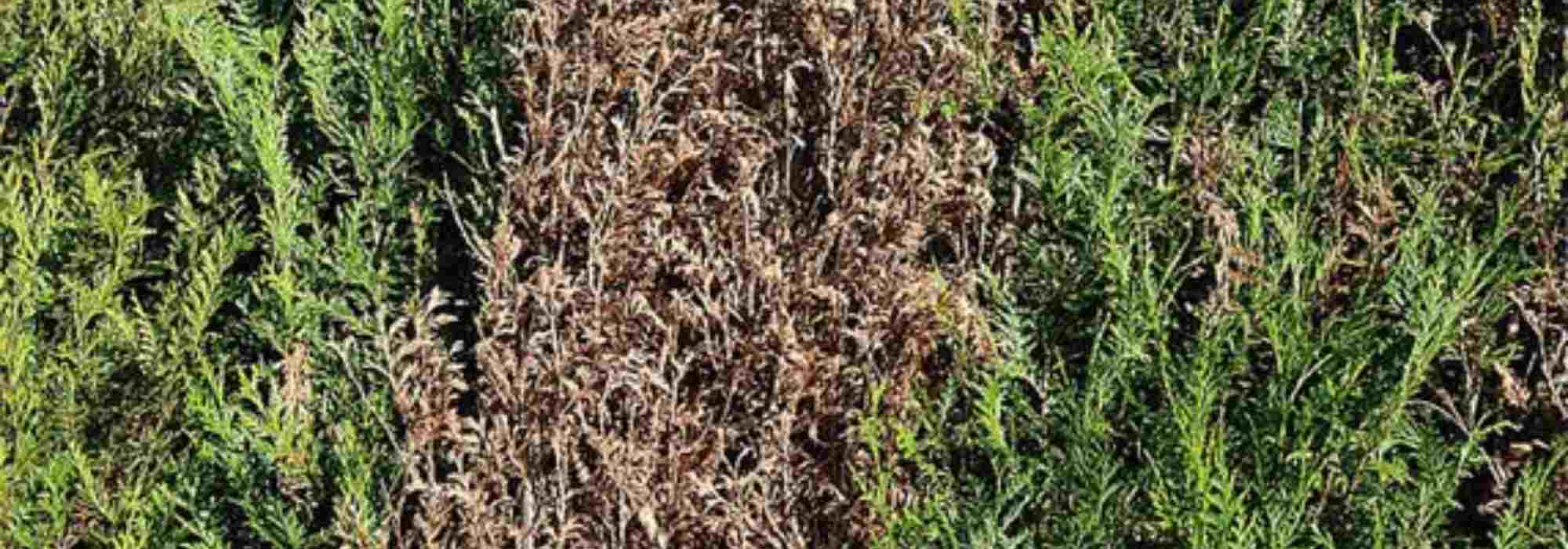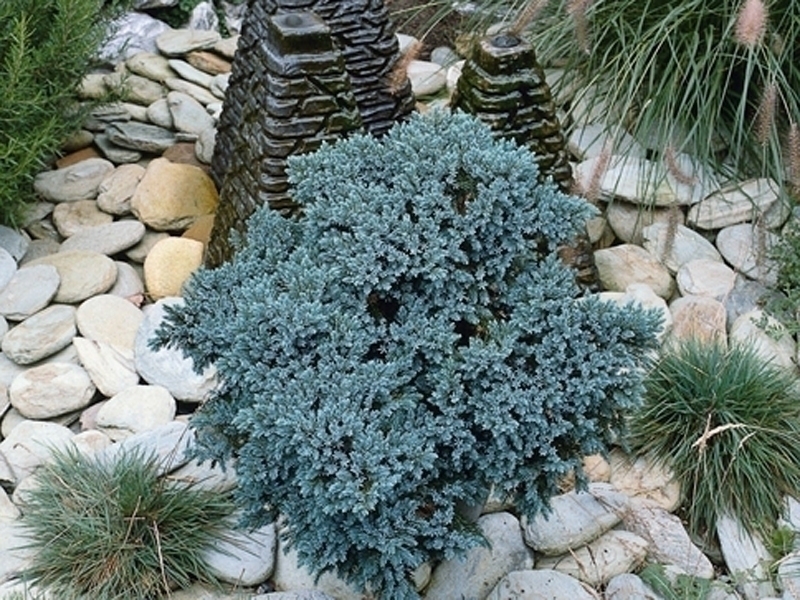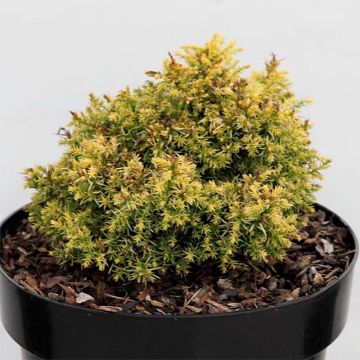

Thuja orientalis Pyramidalis Aurea
Thuja orientalis Pyramidalis Aurea
Thuja orientalis Pyramidalis Aurea
Thuya oriental, Thuya de Chine
Special offer!
Receive a €20 voucher for any order over €90 (excluding delivery costs, credit notes, and plastic-free options)!
1- Add your favorite plants to your cart.
2- Once you have reached €90, confirm your order (you can even choose the delivery date!).
3- As soon as your order is shipped, you will receive an email containing your voucher code, valid for 3 months (90 days).
Your voucher is unique and can only be used once, for any order with a minimum value of €20, excluding delivery costs.
Can be combined with other current offers, non-divisible and non-refundable.
Home or relay delivery (depending on size and destination)
Schedule delivery date,
and select date in basket
This plant carries a 24 months recovery warranty
More information
We guarantee the quality of our plants for a full growing cycle, and will replace at our expense any plant that fails to recover under normal climatic and planting conditions.
Would this plant suit my garden?
Set up your Plantfit profile →
Description
Thuja orientalis Pyramidalis 'Aurea' is interesting for its narrow and regular pyramid shape, its moderate growth, and its evergreen foliage that changes colour: light yellow to golden in spring and autumn, greener in summer, and takes on lovely shades of orange to copper in winter, bringing a beautiful warm hue to the garden at a time when flowers are rare. With a medium size, this conifer fits well in gardens of all sizes. It can be planted as a specimen, in a border, or as a hedge.
Thuja orientalis is an evergreen conifer from the cypress family native to China, but naturally occurring from Iran to Japan. In the wild, it reaches a height of 12 to 20 metres (39 to 66 feet), adopting a beautiful pyramidal habit, spreading branches, and ascending branches that start from the base of the trunk. Its foliage, which persists in winter, has a pleasant scent. It is a perfectly hardy species, well adapted to temperate climates and fairly poor, even dry soils. As it tolerates pruning well, this conifer is often used as a hedge. Its fragrant wood is used for construction work and as incense in Buddhist temples.
The 'Pyramidalis Aurea' variety stands out with its reduced size, narrower habit, and beautiful foliage coloration. Its growth is slow, so it will not exceed 5 to 6 metres (16 to 20 feet) in height and 2 metres (7 feet) in width at maturity, after many years. This conifer reveals aromatic foliage when crushed, consisting of flattened twigs arranged in planes and covered with tiny scale-like leaves measuring 3 mm (0.1in) in length. The leaves overlap each other, giving the twigs a flat appearance. They change colour throughout the year. The cones, green and then grey-brown at maturity, measuring 1.5 to 2.5 cm (1in), are formed by 4 or 5 scales.
The Oriental Thuja 'Pyramidalis Aurea' will find its place as a specimen in a small garden, in a large border, or planted in a group of three near an entrance. It goes well with more disorderly shrubs, large stones, geometric lines of pools or buildings, and masonry structures. It can be associated with complementary grasses or dwarf conifers with a prostrate habit (Juniperus horizontalis Blue Chip), or globose shape (Picea abies Little Gem). The beautiful graphic qualities of conifers naturally stand out in a contemporary garden that prefers the aesthetics of silhouettes and textures over the whimsy of flowers. These plants, with their reassuring permanence, provide lasting structure to a border, mark pathways, border terraces, easily replacing the strong presence of trimmed boxwood or holly. The key is to play with volumes and colours.
Thuja orientalis Pyramidalis Aurea in pictures


Plant habit
Flowering
Foliage
Botanical data
Thuja
orientalis
Pyramidalis Aurea
Cupressaceae
Thuya oriental, Thuya de Chine
Cultivar or hybrid
Other Thuya - Thuja
View all →Planting and care
Thuja orientalis 'Pyramidalis Aurea' should be planted from September to November and from February to June in deep, ordinary but loose and not too heavy soil, slightly acidic, neutral or even slightly calcareous, but retaining some moisture. It prefers climates of an oceanic type, not too dry in summer: it only dislikes extremely hot temperatures and prolonged drought. It is undemanding in terms of exposure, although it prefers a sunny or semi-shady exposure to develop well. Soak the root balls well before planting. Optionally add organic amendment at planting and water generously in the first few years, and in case of prolonged drought. In very poor soil, you can apply a special conifer fertilizer every year in April and weed the soil in summer. This hardy conifer, up to at least -25°C (-13°F) does not require pruning but tolerates it quite well.
Planting period
Intended location
Care
Planting & care advice
This item has not been reviewed yet - be the first to leave a review about it.
Similar products
Haven't found what you were looking for?
Hardiness is the lowest winter temperature a plant can endure without suffering serious damage or even dying. However, hardiness is affected by location (a sheltered area, such as a patio), protection (winter cover) and soil type (hardiness is improved by well-drained soil).

Photo Sharing Terms & Conditions
In order to encourage gardeners to interact and share their experiences, Promesse de fleurs offers various media enabling content to be uploaded onto its Site - in particular via the ‘Photo sharing’ module.
The User agrees to refrain from:
- Posting any content that is illegal, prejudicial, insulting, racist, inciteful to hatred, revisionist, contrary to public decency, that infringes on privacy or on the privacy rights of third parties, in particular the publicity rights of persons and goods, intellectual property rights, or the right to privacy.
- Submitting content on behalf of a third party;
- Impersonate the identity of a third party and/or publish any personal information about a third party;
In general, the User undertakes to refrain from any unethical behaviour.
All Content (in particular text, comments, files, images, photos, videos, creative works, etc.), which may be subject to property or intellectual property rights, image or other private rights, shall remain the property of the User, subject to the limited rights granted by the terms of the licence granted by Promesse de fleurs as stated below. Users are at liberty to publish or not to publish such Content on the Site, notably via the ‘Photo Sharing’ facility, and accept that this Content shall be made public and freely accessible, notably on the Internet.
Users further acknowledge, undertake to have ,and guarantee that they hold all necessary rights and permissions to publish such material on the Site, in particular with regard to the legislation in force pertaining to any privacy, property, intellectual property, image, or contractual rights, or rights of any other nature. By publishing such Content on the Site, Users acknowledge accepting full liability as publishers of the Content within the meaning of the law, and grant Promesse de fleurs, free of charge, an inclusive, worldwide licence for the said Content for the entire duration of its publication, including all reproduction, representation, up/downloading, displaying, performing, transmission, and storage rights.
Users also grant permission for their name to be linked to the Content and accept that this link may not always be made available.
By engaging in posting material, Users consent to their Content becoming automatically accessible on the Internet, in particular on other sites and/or blogs and/or web pages of the Promesse de fleurs site, including in particular social pages and the Promesse de fleurs catalogue.
Users may secure the removal of entrusted content free of charge by issuing a simple request via our contact form.
The flowering period indicated on our website applies to countries and regions located in USDA zone 8 (France, the United Kingdom, Ireland, the Netherlands, etc.)
It will vary according to where you live:
- In zones 9 to 10 (Italy, Spain, Greece, etc.), flowering will occur about 2 to 4 weeks earlier.
- In zones 6 to 7 (Germany, Poland, Slovenia, and lower mountainous regions), flowering will be delayed by 2 to 3 weeks.
- In zone 5 (Central Europe, Scandinavia), blooming will be delayed by 3 to 5 weeks.
In temperate climates, pruning of spring-flowering shrubs (forsythia, spireas, etc.) should be done just after flowering.
Pruning of summer-flowering shrubs (Indian Lilac, Perovskia, etc.) can be done in winter or spring.
In cold regions as well as with frost-sensitive plants, avoid pruning too early when severe frosts may still occur.
The planting period indicated on our website applies to countries and regions located in USDA zone 8 (France, United Kingdom, Ireland, Netherlands).
It will vary according to where you live:
- In Mediterranean zones (Marseille, Madrid, Milan, etc.), autumn and winter are the best planting periods.
- In continental zones (Strasbourg, Munich, Vienna, etc.), delay planting by 2 to 3 weeks in spring and bring it forward by 2 to 4 weeks in autumn.
- In mountainous regions (the Alps, Pyrenees, Carpathians, etc.), it is best to plant in late spring (May-June) or late summer (August-September).
The harvesting period indicated on our website applies to countries and regions in USDA zone 8 (France, England, Ireland, the Netherlands).
In colder areas (Scandinavia, Poland, Austria...) fruit and vegetable harvests are likely to be delayed by 3-4 weeks.
In warmer areas (Italy, Spain, Greece, etc.), harvesting will probably take place earlier, depending on weather conditions.
The sowing periods indicated on our website apply to countries and regions within USDA Zone 8 (France, UK, Ireland, Netherlands).
In colder areas (Scandinavia, Poland, Austria...), delay any outdoor sowing by 3-4 weeks, or sow under glass.
In warmer climes (Italy, Spain, Greece, etc.), bring outdoor sowing forward by a few weeks.






























